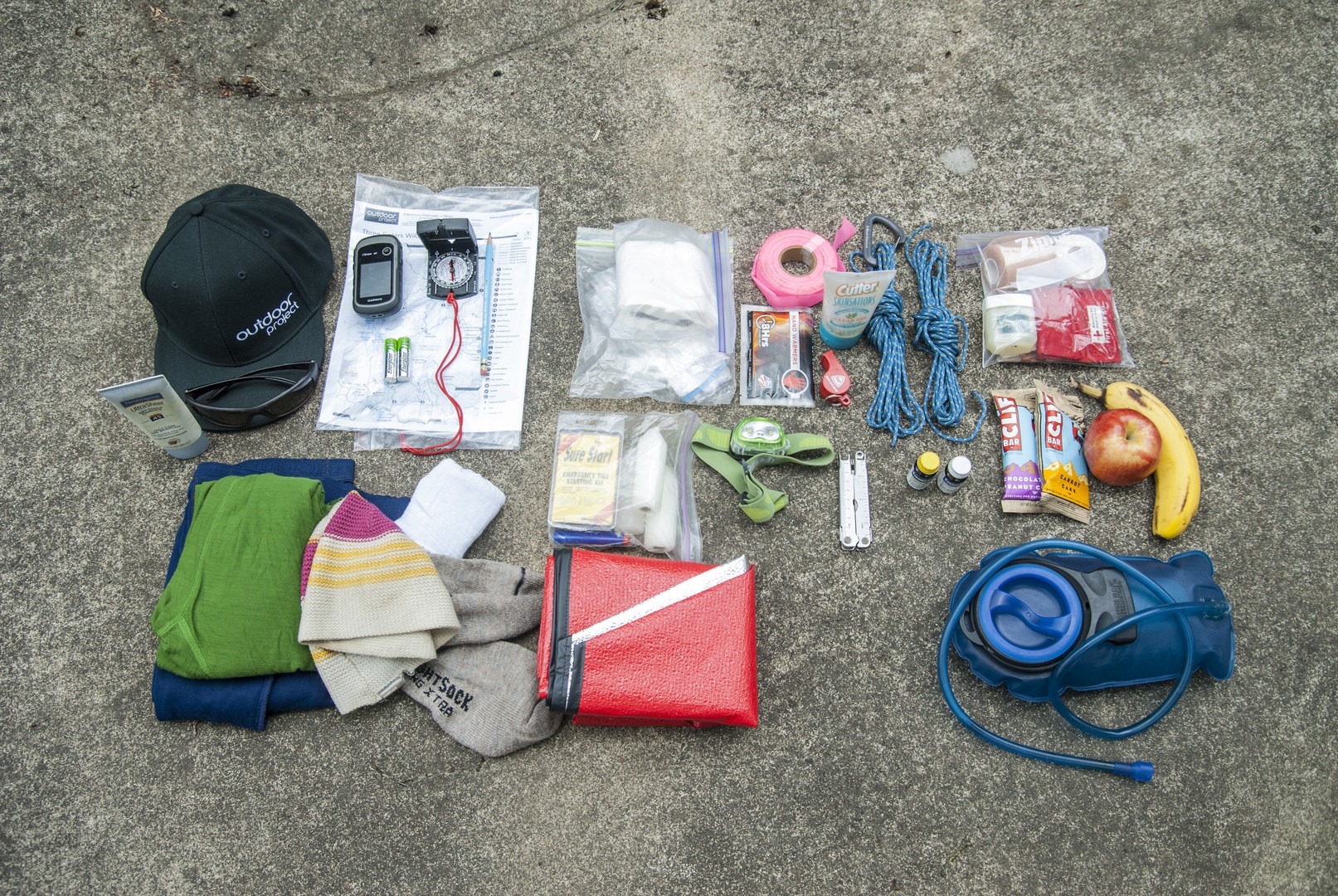You are here
Embarking into the outdoors can be an incredibly rewarding, fun, and even transformational experience. However, it is important to recognize that things don't always go as planned, so it is ideal to be prepared for the worst case scenario. Yet it isn't possible or practical to bring everything you might need to be 100% safe, which is why it is important to be well versed on the 10 Essentials.
Tried-and-true, the 10 Essentials for Outdoor Adventure Safety are practiced and preached by organizations world-wide, including backpacking skills resource, CleverHiker.com. I was first introduced to the 10 Essentials during my short volunteer stint with Deschutes County Search and Rescue, Oregon's most active search and rescue team.
We've also included an Extras List, a few items that are not on the list of 10 but that will keep you comfortable and help you either find your way or help others find you should things not go exactly the way you planned. Depending on your adventure type, and your own personal preferences, your Extras List may vary from ours, and is certainly something that should be customized.
The 10 Essentials are:
1. Navigation
Have all the right devices you need to find your way, particularly when weather is inclement and visibility is limited. GPS devices can be user friendly, and extra batteries should always be packed. A topo map, compass, and pencil for triangulation are key; while they don't need batteries, they only work if you know how to use them. Be sure to take an orienteering course before heading out with a map and compass.
2. Sun Protection
Sunburn on skin or eyes can be completely immobilizing, particularly when traveling on snow. Protective hats, sunglasses, sunscreen, and lip balm are all critical items.
3. Insulation
Bring extra clothing, and the right type of clothing for the conditions you might face. The type of clothing you pack will change based on season and location, but it should always be lightweight and wicking by design. Never pack cotton, as it gets heavy when it gets wet, dries slowly, and will extract warmth from your body. Under layers should be of wool, specialized synthetics (such as polypropylene), or materials that are hybrids of the two. Insulation layers may be made of down or fleece, and outer layers should be made of water-resistant materials such as Gore-Tex.
4. Illumination
Being able to see and find your route and surroundings is critical.
5. First-aid Supplies
First-aid supplies can be purchased as pre-packaged kits or self assembled. Self assembling will certainly save money, though pre-packaged kits can save time and provide convenience.
First-aid kit should include:
- Personal medications and pain relief medication
- Antibiotic ointment
- Band-aids (various sizes)
- Gauze pads
- Sports tape (doubles as repair kit)
- Sports underwrap tape (protects skin from adhesive tape, and serves for creating tendon braces and splints)
- Safety pins (for slings or larger bandages)
- Latex gloves (for treating others)
First-aid kit might include:
- Burn cream
- Moleskin and/or Vaseline (combined, both and prevent almost any hiking blister)
- Hand sanitizer and/or soap
- Sports lotion/cream (to prevent chaffing)
- Anti-diarrhea medications
- Allergy medications
6. Fire
If you get stranded, a good fire can keep you calm and warm for an extended period of time. Fire starters should include:
- Waterproof matches
- Lighter
- Slow-burn candles (doubles as illumination)
- Fire-starter kit with natural pitch. Not necessary but certainly can expedite and ease the process of getting a fire started.
7. Repair Kit + Tools
Utility knife and tape. Duct or Gorilla-style tape may be used, but sports tape from first-aid kit may suffice. Sowing needle and extra thread may also be included.
8. Nutrition
Pack food for nourishment and energy to compliment your dietary preferences and the duration of the trip, and always bring a little extra just in case your trip gets prolonged.
9. Hydration
Drink at least 2 liters of water per day, and based on the availability of water supply from creeks or lakes, carry at least 1 liter of water at any given time. Carry more in arid regions where water is likely scarce. A water filtration or UV device may be used to obtain more potable water. Iodine tablets are lightweight, but they also alter taste.
If you are traveling in the winter, hydration containers such as hydration bladders won't work when temperatures fall below zero. Insulated containers are the best for keeping water liquid in cold winter conditions.
10. Emergency Shelter
Pack and use a space blanket or bivy sack to stay dry and warm if you need to stay in one location.
Extras List
Additional safety and comfort items might include:
- Rope: Thin Gauge/High Strength. Useful for erecting shelters, drying clothes, and hanging food storage containers.
- Extra Zip Lock Bags: good for keeping items in your pack separated and dry.
- Warming Packs: can be the critical tool to ward off frostbite during extended winter adventures.
- Insect Repellent: key for comfort when necessary.
- Whistle: allows sound to travel extremely long distance, and can be the key tool to help you be found.
- Flagger's Tape: If you traverse off trail or in the backcountry where visibility is nearly zero, or in any situation where you think you might have to retrace your steps, flagger's tape should be used to mark your route. Because the use of flagger's tape violates Leave No Trace principles, it should only be used when absolutely necessary.
- Toilet Paper.





Comments
Most of the time that means some sort of bug net
Thank you though, this covers a lot that we need for camping
https://bestcampinghammockgear.com/
Sign In and share them.